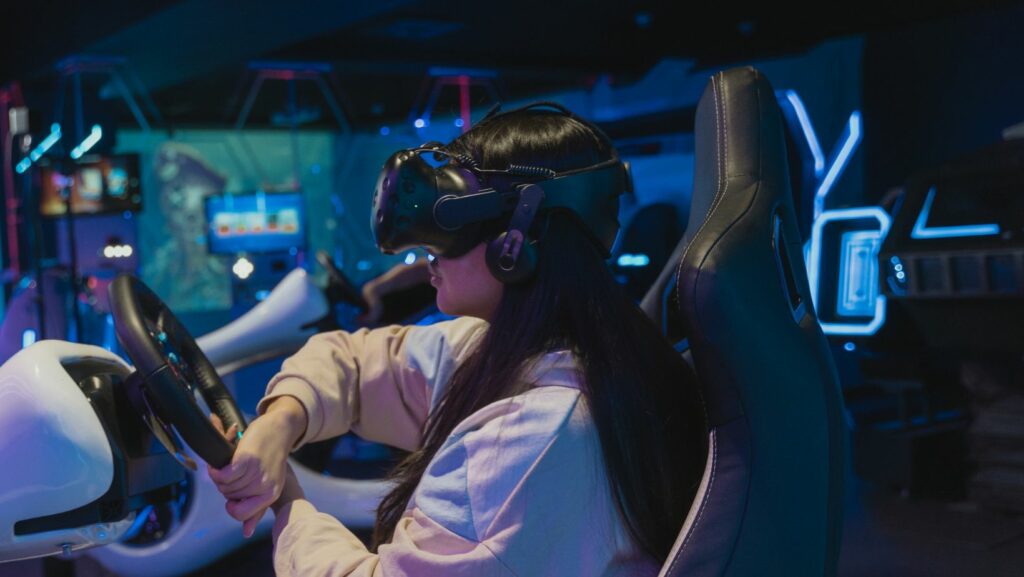Key Takeaways
- Enhanced Communication: Digital racing radios provide crystal-clear audio and real-time updates, minimizing misunderstandings and allowing teams to execute racing strategies effectively.
- Durability and Reliability: Built to withstand extreme racing conditions, these devices feature rugged materials and weather-resistant housings, ensuring consistent performance under various environments.
- Advanced Features: Improved battery life and noise cancellation technology allow for uninterrupted communication and focus during races, enhancing overall safety for drivers.
- Variety of Options: Many brands offer a range of models tailored to both amateur and professional racers, so it’s important to consider individual needs, from budget to frequency compatibility.
- Monitoring Capabilities: Some digital radios come with integrated monitoring systems that track communication quality, helping teams adjust strategies for optimal performance on the track.
In the fast-paced world of motorsports, communication can make or break a race. Digital racing radios have emerged as essential tools, enhancing the connection between drivers and their teams. These advanced devices offer crystal-clear audio and reliable performance, allowing for real-time updates and strategies on the track.
As technology continues to evolve, so do the capabilities of racing radios. From improved battery life to advanced noise cancellation features, digital radios are designed to withstand the rigors of high-speed racing. Understanding the benefits and features of these devices can provide a competitive edge, making it crucial for enthusiasts and professionals alike to stay informed about the latest innovations in digital racing communication.
Digital Racing Radios
Digital racing radios serve as essential communication tools within the motorsport arena. These devices enable real-time exchanges between drivers and their teams, significantly enhancing the coordination and execution of race strategies.
Key features of digital racing radios include:
- Crystal-Clear Audio: Advanced technology ensures clarity, minimizing miscommunication during high-stakes situations.
- Reliable Performance: Built to withstand the rigors of racing environments, these radios maintain connectivity under various conditions.
- Improved Battery Life: Longer-lasting batteries reduce the need for frequent recharging, allowing teams to focus on the race without interruptions.
- Noise Cancellation: This feature filters out background noise, enabling clear communication even in loud racing environments.
Various brands and models cater to both amateur and professional racers, offering customizable options based on specific needs. Recent innovations include integrated monitoring systems, enabling teams to collect data on communication effectiveness and adapt strategies as needed.
Staying informed about advancements in digital racing radios is crucial for enhancing competitive performance. Enthusiasts and professionals alike benefit from the latest technologies that promote effective communication during races, ultimately improving team dynamics and outcomes on the track.
Key Features of Digital Racing Radios
Digital racing radios include several key features that enhance communication during races. These features significantly contribute to optimal performance and safety on the track.

Audio Quality
Audio quality in digital racing radios defines the effectiveness of communication. Devices deliver crystal-clear sound, minimizing distortion and ensuring messages are understood correctly. High-definition audio often enhances the drivers’ ability to receive real-time feedback, which is critical during high-speed situations. Some models incorporate advanced noise-cancellation technology, filtering out background sounds, facilitating clearer exchanges even in the noisiest environments.
Frequency Range
Frequency range significantly affects communication capabilities. Digital racing radios operate across various frequencies, allowing for expanded coverage and reduced interference from other devices. Many brands support multiple channels within the same frequency band, enabling teams to coordinate seamlessly. Additionally, some units feature programmable channels, allowing teams to customize their communication setup according to specific race regulations or personal preferences.
Build Quality
Build quality plays a crucial role in the durability and reliability of digital racing radios. Most models are designed with rugged materials that can withstand extreme racing conditions, including vibrations, impacts, and moisture. Many radios feature weather-resistant housings, ensuring reliable performance in various environmental situations. Sturdy construction guarantees longevity and consistent functionality, which is vital for both amateur and professional racers.
Benefits of Using Digital Racing Radios
Digital racing radios offer significant advantages for both drivers and their teams, enhancing communication effectiveness and promoting safer racing environments.
Improved Communication
Digital racing radios deliver clear and instantaneous communication, minimizing misunderstandings during races. Real-time updates allow teams to relay critical information quickly, ensuring drivers receive strategies and alerts without delays. Features like high-definition audio and multiple channel support facilitate seamless interaction among team members, even in noisy environments. Teams can coordinate pit stops, tire changes, and other race strategies more efficiently, increasing overall performance. Additionally, integrated monitoring systems track communication quality, enabling teams to adjust approaches for optimal effectiveness.
Enhanced Safety
Using digital racing radios greatly improves safety during races by providing continuous communication between drivers and their teams. Immediate updates regarding track conditions, potential hazards, and competitor actions help drivers make informed decisions. Noise cancellation features reduce background distractions, allowing drivers to focus on instructions and vital information. Furthermore, having a reliable communication channel reduces the risk of miscommunication, which can lead to accidents. Regular updates on vehicle performance can prompt timely interventions, such as suggesting pit stops for fuel or mechanical issues, ultimately enhancing driver safety on the track.
Popular Brands and Models
Several brands dominate the digital racing radio market, offering advanced features and reliable performance. The following highlights key manufacturers and prominent models in the industry.
Brand A
Brand A is known for its robust digital racing radios, such as the Model X1. The Model X1 features superior audio clarity, multi-channel support, and a durable design that withstands harsh racing conditions. Its advanced noise-cancellation technology enhances communication by filtering background noise, allowing for clear exchanges between drivers and teams. Additionally, this model includes a long-lasting battery that supports extended race durations, ensuring that teams stay connected throughout the event.
Brand B
Brand B offers the innovative Model Y2, recognized for its lightweight construction and customizable features. The Model Y2 provides crystal-clear audio transmission, making it easier for drivers to stay focused and receive real-time updates. Enhanced frequency range capabilities allow for optimal signal reception even in challenging environments. The built-in monitoring system tracks communication efficiency, enabling teams to adjust strategies on-the-fly. Furthermore, its ergonomic design ensures comfort during long races, promoting operational efficiency and driver concentration.
Considerations When Choosing a Digital Racing Radio
Selecting the right digital racing radio involves several key considerations. Evaluating factors such as budget and compatibility ensures optimal performance during races.
Budget
- Determine the budget based on the racer’s level and needs. Entry-level models range from $100 to $300, while professional-grade radios typically cost between $400 and $1,200.
- Consider additional expenses for accessories, like headsets and antennas, which can enhance overall functionality. Some models come bundled with necessary accessories, providing better value for the investment.
- Research brands that offer warranties and customer support, adding peace of mind to the purchase. Established manufacturers often stand behind their products, ensuring efficiency and reliability on the track.
Compatibility
- Ensure compatibility with existing team communication systems; some digital racing radios operate on specific frequencies or protocols. Verify whether the chosen radio can connect seamlessly with other devices used during competitions.
- Evaluate connection options, including wired and wireless capabilities. Some models support Bluetooth connectivity, facilitating integration with smartphones for expanded functionality.
- Assess the ability to connect to multiple team members. Models that support multi-channel communication can improve coordination and responsiveness during races, allowing for clear exchanges among drivers, spotters, and crew members.
Indispensable Tools in The Fast-paced World of Motorsports
Digital racing radios are indispensable tools in the fast-paced world of motorsports. They not only enhance communication but also significantly improve safety and performance on the track. With features like crystal-clear audio and advanced noise cancellation, these radios ensure that drivers and teams can exchange vital information without interruptions.
As technology continues to evolve, staying informed about the latest advancements in digital racing communication is essential. Choosing the right model tailored to specific needs can make all the difference in a race. Whether for amateur enthusiasts or seasoned professionals, investing in high-quality digital racing radios is a step toward achieving competitive excellence.


